Fainting Goat
- February 22, 2024
- 0 comment
Fainting goats, also known as myotonic goats or Tennessee fainting goats, are a unique breed of domestic goats distinguished by their peculiar response to fear or excitement. When startled or surprised, these goats experience a temporary stiffening of muscles, causing them to collapse or “faint” for a few seconds. Despite the alarming name, fainting goats do not lose consciousness during these episodes, and the behavior is painless. Originating from Tennessee in the late 19th century, fainting goats were initially bred for their myotonia congenita trait, which served as a natural defense mechanism against predators.
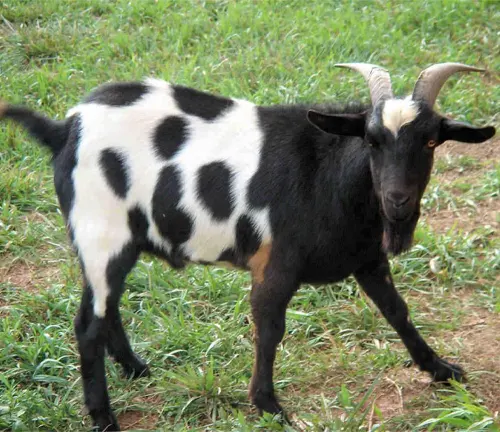
Today, they are recognized for their friendly disposition, making them popular as pets and for meat production in some regions. Fainting goats come in various colors and patterns and possess a sturdy build, typically weighing between 60 to 175 pounds. While their fainting behavior is their most distinctive feature, fainting goats are also known for their sociable nature and adaptability to various climates. Despite their unusual trait, fainting goats are resilient animals that have captured the curiosity and affection of people worldwide.
| Specification | Description |
|---|---|
| Common Name | Fainting Goat |
| Scientific Name | Capra aegagrus hircus |
| Other Names | Myotonic Goat, Tennessee Fainting Goat |
| Origin | United States, specifically Tennessee |
| Weight | 60 to 175 pounds (27 to 79 kilograms) |
| Height | 17 to 25 inches (43 to 64 centimeters) at the shoulder |
| Coat Color | Various colors and patterns, including black, white, brown, and combinations thereof |
| Coat Texture | Short to medium-length coat, varying in texture |
| Lifespan | 8 to 12 years, with proper care |
| Distinctive Trait | Myotonia congenita – temporary stiffening of muscles upon stimulation, causing fainting |
| Behavior | Docile, sociable, friendly |
| Uses | Pets, meat production |
| Conservation Status | Not considered rare, but recognized as a heritage breed due to historical significance |
| Habitat | Adaptable to various climates and environments |
| Genetic Condition | Autosomal dominant inheritance pattern of myotonia congenita gene |
| Health Considerations | Prone to parasites, hoof issues, and metabolic disorders; require regular veterinary care and preventive measures |
| Cultural Impact | Featured in various forms of media, symbolizing resilience and adaptability |
| Conservation Efforts | Preservation initiatives aimed at safeguarding genetic diversity and cultural significance of the breed |
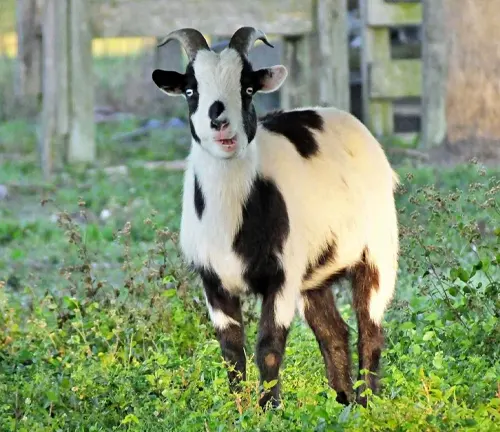
Fainting goats, also known as myotonic goats or Tennessee fainting goats, are a unique breed of domestic goats characterized by their tendency to stiffen and fall over when startled or excited. This article explores the fascinating world of fainting goats, shedding light on their history, genetics, behavior, and more.
Origin and History
Fainting goats, also known as myotonic goats or Tennessee fainting goats, have a fascinating origin rooted in the hills of Tennessee, United States. The breed’s history dates back to the 1880s when farmers in the region began selectively breeding goats with a unique trait: the tendency to stiffen and “faint” when startled or excited. This distinctive behavior served as a natural defense mechanism against predators, as the temporary paralysis would cause potential threats to lose interest, giving the goats time to escape.
Development of the Breed
The development of the fainting goat breed involved careful selection and breeding of goats displaying the myotonia congenita trait. Myotonia congenita is a genetic condition that affects the muscles, causing them to contract and stiffen when stimulated. Early breeders recognized the value of goats with this trait and sought to enhance it through selective breeding practices.
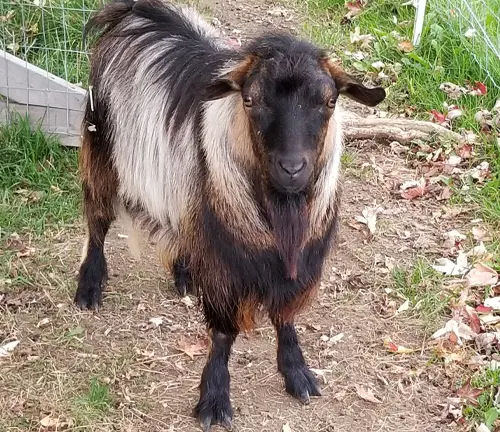
Over time, the breed gained popularity not only for its practicality but also for its novelty. Fainting goats became a curiosity among farmers and eventually caught the attention of enthusiasts beyond Tennessee. As interest in the breed grew, efforts to preserve and promote fainting goats intensified, leading to their recognition by various livestock associations and conservation organizations.
Genetics Behind Fainting Goats
Fainting goats’ unique behavior of fainting when startled or excited is attributed to a genetic condition known as myotonia congenita. This condition affects the muscles, causing them to contract and stiffen when stimulated. Understanding the genetics behind fainting goats provides insight into how this trait is inherited and expressed within the breed.
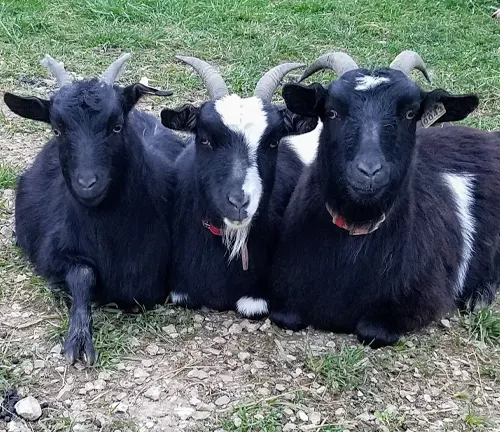
Inheritance Pattern
Myotonia congenita in fainting goats follows an autosomal dominant inheritance pattern. In simple terms, this means that a goat only needs to inherit one copy of the gene responsible for myotonia congenita from either parent to exhibit the fainting behavior. This dominant gene overrides the normal gene, leading to the expression of the trait.
When two fainting goats with myotonia congenita genes breed, each offspring has a 50% chance of inheriting the gene from one or both parents. If a goat inherits the gene from both parents (homozygous), it may exhibit more severe symptoms of myotonia. However, even goats with a single copy of the gene (heterozygous) can still display the fainting behavior.
Physical Characteristics
Fainting goats are known for their distinctive appearance and unique traits that set them apart from other goat breeds. Understanding their physical characteristics provides insight into their overall build and appearance.
Size and Build
Fainting goats exhibit a medium-sized build with a sturdy and compact frame. On average, they typically weigh between 60 to 175 pounds (27 to 79 kilograms) and stand approximately 17 to 25 inches (43 to 64 centimeters) tall at the shoulder. Despite their medium size, fainting goats possess a muscular physique, giving them a robust and well-proportioned appearance.
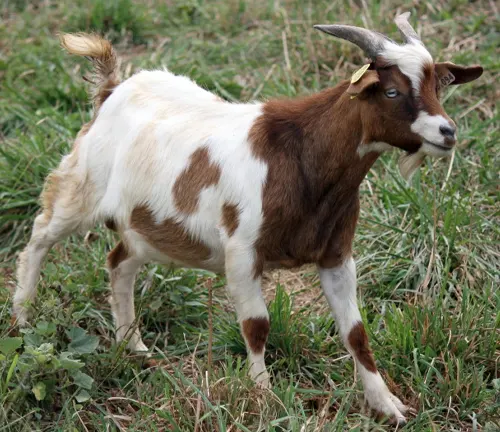
Their body proportions are well-balanced, with a broad chest, straight back, and strong legs. These features contribute to their agility and endurance, allowing them to navigate various terrains with ease. Additionally, fainting goats have a relatively short to medium-length coat, which can vary in texture and color. They come in a range of colors and patterns, including black, white, brown, and combinations thereof, adding to their visual appeal.
Behavior and Temperament
Fainting goats are renowned for their unique behavior, which sets them apart from other goat breeds. Understanding their behavior and temperament provides valuable insight into their characteristics as companion animals and livestock.
Fainting Behavior
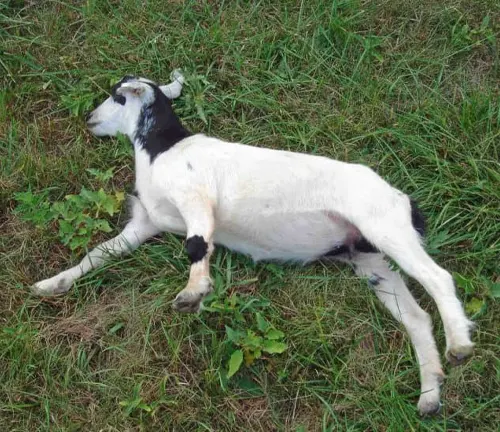
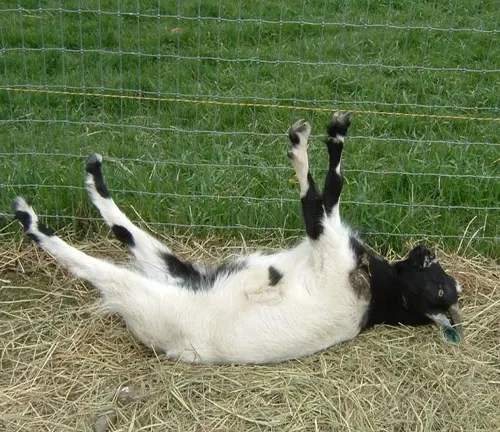
The most distinctive trait of fainting goats is their tendency to faint or “freeze” when startled or excited. This behavior, known as myotonia, is a result of a genetic condition called myotonia congenita, which causes temporary muscle stiffness upon stimulation.
When a fainting goat experiences a sudden stimulus, such as a loud noise or sudden movement, its muscles briefly contract and stiffen, causing it to fall over. This reaction typically lasts for a few seconds before the goat recovers and resumes normal activity.
Despite its alarming appearance, fainting is not harmful to the goat, and it does not experience pain during the episode. Instead, fainting serves as a natural defense mechanism, deterring potential threats by momentarily immobilizing the goat.
Common Misconceptions
Despite their endearing nature and unique behavior, fainting goats are often subject to misconceptions. Addressing these misconceptions helps to dispel myths and provide a clearer understanding of this fascinating breed.
Fainting Equals Pain
One common misconception about fainting goats is that they experience pain when they faint. However, this belief is incorrect. The fainting behavior exhibited by fainting goats, known as myotonia, is a result of temporary muscle stiffness caused by a genetic condition called myotonia congenita.

During a fainting episode, the goat’s muscles briefly contract and stiffen, causing it to fall over. While this may appear distressing to onlookers, the goat does not experience pain during the episode. Instead, the stiffness is a natural physiological response that does not cause harm or discomfort to the animal.
Breeding and Rearing Fainting Goats
Breeding and rearing fainting goats require careful consideration and attention to ensure the health and vitality of the breed. Selective breeding plays a crucial role in maintaining desirable traits and minimizing the risk of genetic disorders within the fainting goat population.
Selective Breeding
Responsible breeders of fainting goats engage in selective breeding practices to preserve and enhance desirable traits while minimizing the transmission of hereditary conditions. Selective breeding involves carefully selecting breeding pairs based on their genetic makeup, temperament, and conformation to breed standards.

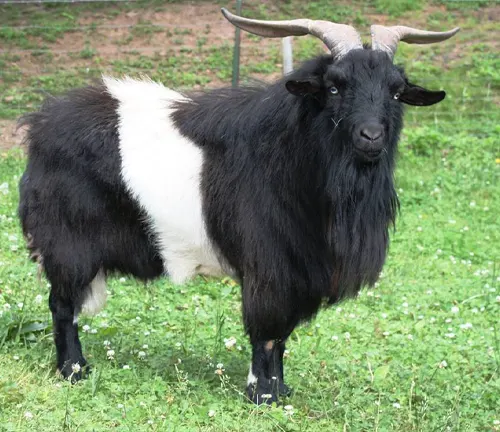
One primary consideration in selective breeding is the presence of the myotonia congenita gene, which causes the fainting behavior characteristic of fainting goats. Breeders aim to maintain the presence of this gene within the population while also ensuring genetic diversity and minimizing the risk of homozygous individuals, which may exhibit more severe symptoms of myotonia.
Health Considerations
Maintaining the health and well-being of fainting goats is essential for their overall welfare and longevity. Understanding common health issues and implementing preventive measures is crucial for ensuring the vitality of these unique animals.
Common Health Issues
While fainting goats are generally hardy and resilient animals, they may be prone to certain health issues that require attention and management. Some of the common health issues observed in fainting goats include:
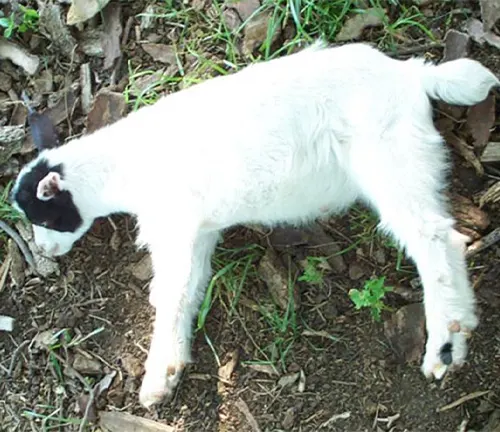
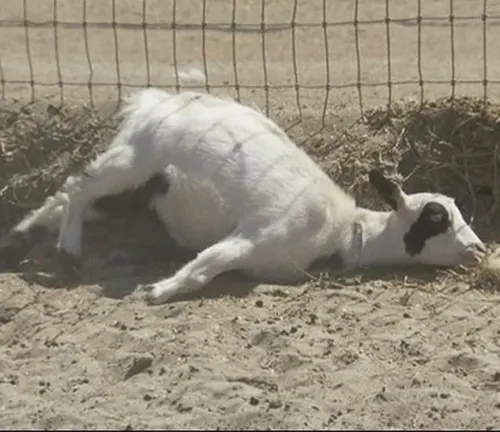
- Parasites: Like all livestock, fainting goats are susceptible to internal and external parasites, such as worms, ticks, and lice. Regular deworming and parasite control measures are essential for preventing parasitic infestations and maintaining the health of the herd.
- Hoof Issues: Fainting goats, like other goat breeds, may experience hoof problems, such as overgrowth, cracks, or infections. Proper hoof care, including regular trimming and maintenance, helps prevent hoof issues and promotes sound hoof health.
- Metabolic Disorders: Fainting goats may be prone to certain metabolic disorders, such as urinary calculi (kidney stones) or hypocalcemia (low blood calcium levels). Providing a balanced diet, adequate hydration, and access to mineral supplements can help prevent metabolic disorders and support overall health.
- Respiratory Infections: Fainting goats may be susceptible to respiratory infections, particularly in crowded or poorly ventilated environments. Proper housing and sanitation practices, along with routine vaccinations, can help reduce the risk of respiratory diseases.
- Reproductive Issues: Female fainting goats may experience reproductive issues, such as dystocia (difficult birth) or reproductive infections. Proper breeding management, prenatal care, and veterinary assistance during kidding can help minimize the incidence of reproductive problems.
Fainting Goats as Pets
Fainting goats are increasingly popular as pets due to their friendly disposition, unique behavior, and manageable size. Providing appropriate housing and space is essential for ensuring the health and well-being of fainting goats kept as pets.
Housing and Space Requirements
When considering housing and space requirements for fainting goats, several factors should be taken into account to provide a comfortable and safe environment:
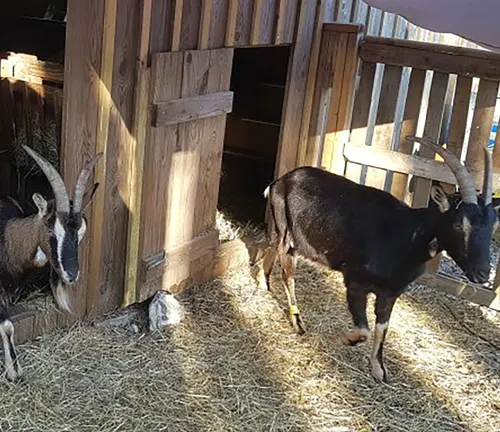
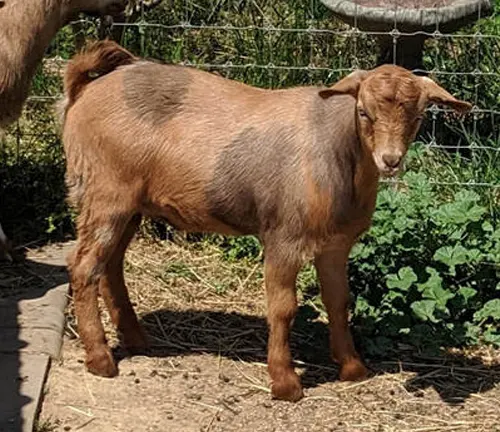
- Shelter: Fainting goats require access to shelter to protect them from extreme weather conditions, such as heat, cold, rain, and wind. A sturdy and well-insulated shelter, such as a barn or shed, provides protection from the elements and serves as a retreat during inclement weather.
- Fencing: Secure fencing is essential for containing fainting goats and preventing escape. Fencing should be sturdy, at least 4 to 5 feet tall, and constructed of materials that goats cannot easily climb or squeeze through, such as woven wire or welded wire panels.
- Outdoor Space: Fainting goats benefit from access to outdoor space where they can graze, roam, and engage in natural behaviors. A securely fenced outdoor area with ample vegetation, such as grass or pasture, allows goats to forage and exercise freely.
- Space Requirements: The amount of space required for fainting goats depends on factors such as herd size, terrain, and available resources. As a general guideline, provide a minimum of 200 to 400 square feet of space per goat in the outdoor enclosure to ensure adequate room for movement and grazing.
- Enrichment: Enrichment activities, such as climbing structures, stumps, and toys, provide mental stimulation and entertainment for fainting goats. Incorporating enrichment features into the outdoor space encourages natural behaviors and prevents boredom.
- Cleanliness and Maintenance: Regular cleaning and maintenance of the housing and outdoor space are essential for preventing the buildup of waste, parasites, and pathogens. Remove feces and soiled bedding regularly, and ensure that water sources are clean and replenished regularly.
Conservation Efforts
Conservation efforts play a vital role in safeguarding the genetic diversity and cultural significance of fainting goats. Preservation initiatives aim to protect and preserve fainting goat populations for future generations, ensuring their continued existence and viability.
Preservation Initiatives
Various organizations and individuals are involved in preservation initiatives aimed at conserving fainting goats and promoting their welfare. These initiatives encompass a range of activities and strategies, including:
- Breeding Programs: Responsible breeding programs focus on maintaining genetic diversity within fainting goat populations while preserving desirable traits and minimizing the risk of genetic disorders. Breeders carefully select breeding pairs based on their genetic makeup, health, and conformation to breed standards.
- Genetic Conservation: Genetic conservation efforts involve the identification and preservation of genetic material from diverse fainting goat populations. Cryopreservation of semen and embryos, as well as the establishment of gene banks, helps safeguard genetic diversity and prevent the loss of valuable genetic resources.
- Public Awareness and Education: Public awareness and education initiatives raise awareness about the importance of fainting goat conservation and promote responsible stewardship among breeders, owners, and the general public. Educational outreach programs, workshops, and seminars provide information on fainting goat care, breeding practices, and conservation efforts.
- Habitat Preservation: Habitat preservation initiatives focus on protecting natural habitats and grazing areas essential for fainting goat populations. Conservation organizations work to establish and maintain protected areas, wildlife corridors, and grazing reserves to ensure the availability of suitable habitat for fainting goats and other native species.
- Legislative Protection: Legislative protection measures, such as designating fainting goats as heritage breeds or implementing regulations to prevent crossbreeding with other goat breeds, help safeguard fainting goat populations from threats such as habitat loss, genetic dilution, and unsustainable breeding practices.
- Collaborative Partnerships: Collaboration among government agencies, conservation organizations, breeders, researchers, and local communities is essential for the success of conservation efforts. Collaborative partnerships facilitate the sharing of resources, expertise, and best practices, leading to more effective conservation outcomes.
Different Species
“Fainting Goat” is commonly used to refer to goats exhibiting myotonia congenita, there are not different species of fainting goats. Instead, fainting goats belong to the same species as other domestic goats, Capra aegagrus hircus. Within this species, there are various breeds, and some of them may exhibit the myotonia congenita trait that causes fainting behavior.
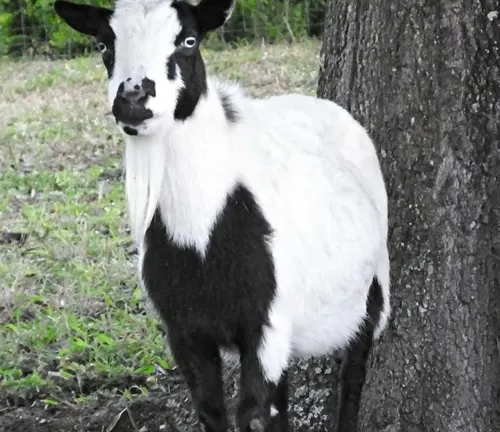
Frequently Asked Questions (FAQs)
- What causes fainting in fainting goats?
Fainting in fainting goats is caused by a genetic condition called myotonia congenita, which leads to temporary muscle stiffness when the goat is startled or excited. - Do all fainting goats faint?
While fainting goats are known for their fainting behavior, not all goats of this breed faint. The frequency and intensity of fainting can vary among individuals. - Can fainting goats recover quickly after fainting?
Yes, fainting goats typically recover quickly after fainting episodes. The stiffness lasts for only a few seconds, and the goat resumes normal activity shortly afterward. - Are fainting goats suitable for beginner goat owners?
Fainting goats can be suitable for beginner goat owners due to their friendly nature and ease of care. However, potential owners should be aware of their unique behavior and housing requirements. - Do fainting goats require special care or attention?
While fainting goats do not require special care beyond that of other goat breeds, owners should be aware of their susceptibility to certain health issues, such as parasites and hoof problems. - Are fainting goats good with children and other animals?
Yes, fainting goats are generally gentle and sociable animals, making them good companions for children and other pets when properly socialized. - Can fainting goats be trained not to faint?
While fainting is a natural behavior in fainting goats due to their genetics, some goats may become less prone to fainting with positive reinforcement training and socialization. - What is the temperament of fainting goats like?
Fainting goats are known for their docile and friendly temperament, making them suitable for both novice and experienced goat owners. - Do fainting goats need a specific diet?
Fainting goats have similar dietary needs to other goat breeds and should be provided with a balanced diet consisting of hay, grains, and fresh water. Supplemental minerals and vitamins may also be necessary. - Are fainting goats good for meat production?
Yes, fainting goats can be raised for meat production. Their meat is lean and flavorful, making them a popular choice for meat enthusiasts and small-scale farmers. - How can I prevent my fainting goat from getting injured during fainting episodes?
Providing a safe and secure environment with soft bedding and ample space can help prevent injuries during fainting episodes. Additionally, minimizing stressors and handling the goat gently can reduce the likelihood of fainting.




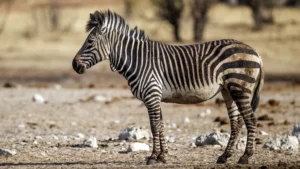








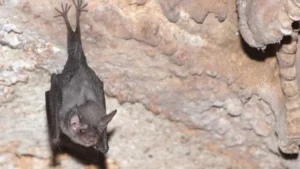
Leave your comment